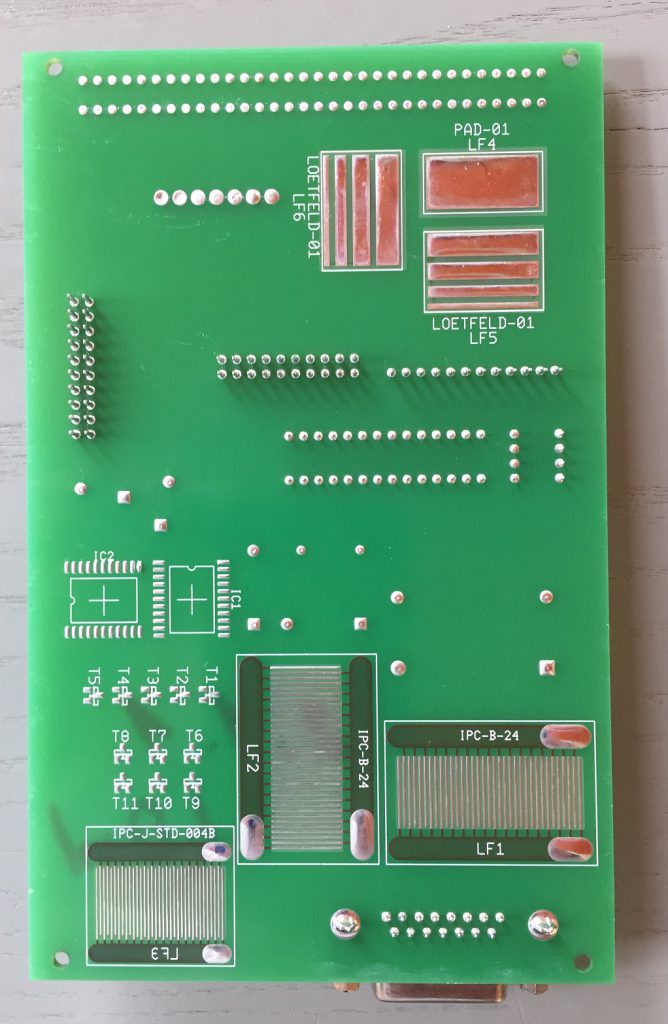In its more than 115 years of company history, Emil Otto GmbH has always placed great value on good, cooperative and long-term collaboration with its customers. This is also the case with Mebatron Elektronik GmbH to the west of Berlin. Mebatron Elektronik GmbH sees itself as a competent EMS
Service provider that assembles printed circuit boards for prototypes, samples, small, medium and large series on behalf of customers. Thanks to state-of-the-art production equipment and optimized processes, we guarantee on-time, cost-effective and high-quality production in an environmentally friendly manner.
Environmentally friendly production in particular is part of the company's philosophy. For this reason, there were no reservations within the company about the use of water-based fluxes. On the contrary, the production managers saw many advantages in the water-based fluxes. As they are non-flammable, legal regulations that otherwise apply to hazardous substances can be circumvented during transportation, storage and handling. Added to this are the very good soldering results.
Mr. Gerhardt, Production Manager at Mebatron, still remembers the inquiry he submitted to Emil Otto in autumn 2016: "At the time, we were looking for a water-based flux for our wave soldering system. The aim was to reduce the flux residues on the circuit boards without compromising the soldering quality." The first step was to test the available water-based fluxes from Emil Otto GmbH in order to find a suitable flux. In 2016, Emil Otto carried out extensive tests on wave and selective soldering with water-based fluxes and used the results to develop a series of new formulations.
"Environmental protection and sustainability are important issues in our company. It's very good to use sustainable products and at the same time achieve advantages in handling and transporting these products. In the case of electronic fluxes, we have come to the conclusion that water-based fluxes are the future," explains Gerhardt. "But as is usually the case, theory and practice are not identical. Our first trial with water-based fluxes from a well-known foreign manufacturer produced relatively good results in terms of soldering quality, although bridges still occurred frequently. However, the flux residues were sticky and difficult to remove," continues Gerhardt. As a result, further evaluations were carried out with other water-based fluxes.
Based on the customer's requirements and experience, Emil Otto recommended the flux EO-G-002, which has a solids content of 3.0 % and is type 2.2.3.A according to ISO 9454 (ORL0 according to DIN EN 61 190). It is halogen-free, with a low resin content. It is characterized by very good wettability, best soldering results and very clean PCBs after soldering. System contamination is also minimal. EO-G-002 is suitable for both wave and selective soldering. Samples of the flux were tested by customers in an evaluation process and subsequently approved for series production.
"The flux met all our expectations. Both in terms of soldering results and cleanliness, it surpasses all other fluxes tested to date. Our assemblies are virtually residue-free after the wave soldering process. The soldering results were very good and bridging was also significantly reduced," says Gerhardt, summarizing his experience with EO-G-002. However, Gerhardt also points out that certain process adjustments must be made when working with water-based fluxes. For example, it is important to use a long preheating section in the wave soldering process so that the flux has the opportunity to dry over the entire surface and the assembly does not run wet over the wave, as otherwise tin beads will form.
Emil Otto GmbH supported the customer in adapting the flux process. "In the long time that we have been dealing with fluxes, we have gained a lot of experience with different processes and systems. We are happy to actively pass on this experience to our customers so that they can change the flux quickly and effectively without the systems having to stand still for long periods. Our aim is to enable our customers to carry out fast, reproducible soldering processes," summarizes Markus Geßner, Head of Marketing and Sales at Emil Otto GmbH.

